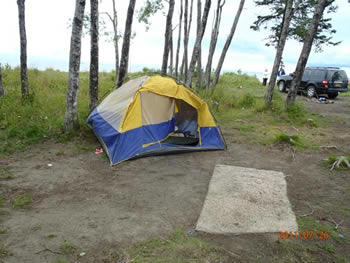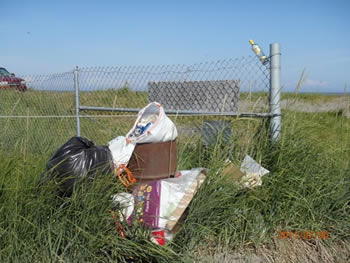Kasilof River Special Use Area
Management
The Kasilof River Special Use Area (KARSUA) is actively managed by the Southcentral Regional Office (SCRO) of the Division of Mining, Land and Water, Department of Natural Resources. The SCRO is tasked with managing general domain state owned land throughout Southcentral Alaska and undertakes a variety of management/stewardship obligations pertaining to public process decision making, issuance of land use authorizations (permits, easements, leases), and compliance/enforcement duties. Some activities require land use authorizations, while other activities are Generally Allowed Uses
Special Use Lands is a designation placed on certain lands identified as having "...special resource values warranting additional protections or other special requirements" (11 AAC 96.014). The following are the additional protections set by regulation within the KARSUA:

- A person may not place, drop, or discard trash garbage or waste, including human waste, except within an authorized or provided toilet or trash facility;
- A person may not dispose of fish or fish waste on or in state property except upon tidelands or submerged lands;
- A person may not cut, collect, or harvest a dead standing or live tree, without prior written authorization from the department;
- With the exception of aircraft, emergency or state-owned motorize vehicles, or a use authorized under a permit issued by the department, within unit KS and KN as shown on the map entitled Kasilof River Special Use Area (ADL 230992): Boundary and State Land, a person may not operate a motorized vehicle, except on designated trails, areas, and the beach as shown on the maps entitled Kasilof River Special Use Area (ADL 230992): Designated Motorized Areas South Side (Unit KS), dated August 10, 2012;
- If participating in the Kasilof River personal use set gillnet fishery under 5 AAC 77.540, a person may not place stakes, signs, running lines, buoys, or dry nets after December 31 and before May 1 of each year;
- If participating in the Kasilof River personal use set gillnet fishery under 5 AAC 77.540, a person may not erect or stage a camp, structure, facility, or any related equipment for more than 21 consecutive days for personal use on the beach, except for stakes, signs, running lines, buoys, or dry nets;
- After May 31 and before August 16 of each year, a person may not discharge a firearm, except for the purpose of lawful hunting or trapping;
- A person may not relocate a camp, structure, facility, or any related equipment within two miles of the original site for at least 96 hours after the end of the 14-day period for the original site;
- A person may not deface, destroy, disable, or remove any state-owned or authorized facility or property

DNR's overall management direction puts its focus on maintaining and enhancing public safety, public education, access and recreational opportunities for public and commercial users as well as the protection of fish and wildlife habitat.
Compliance tools, such as education and public awareness are a very important part of the KARSUA. In order to lower impacts to the natural resources and improve the public's overall enjoyment of the area, the following will be considered and implemented as feasible:

- Provide dedicated staff onsite to answer questions and dispense information
- Promote educational materials, signage, brochures, and kiosks
- Develop partnerships with community groups and/or stewards in the area
- Support regeneration projects within heavily impacted areas
- Establish community clean-up events
- Develop education and awareness programs





